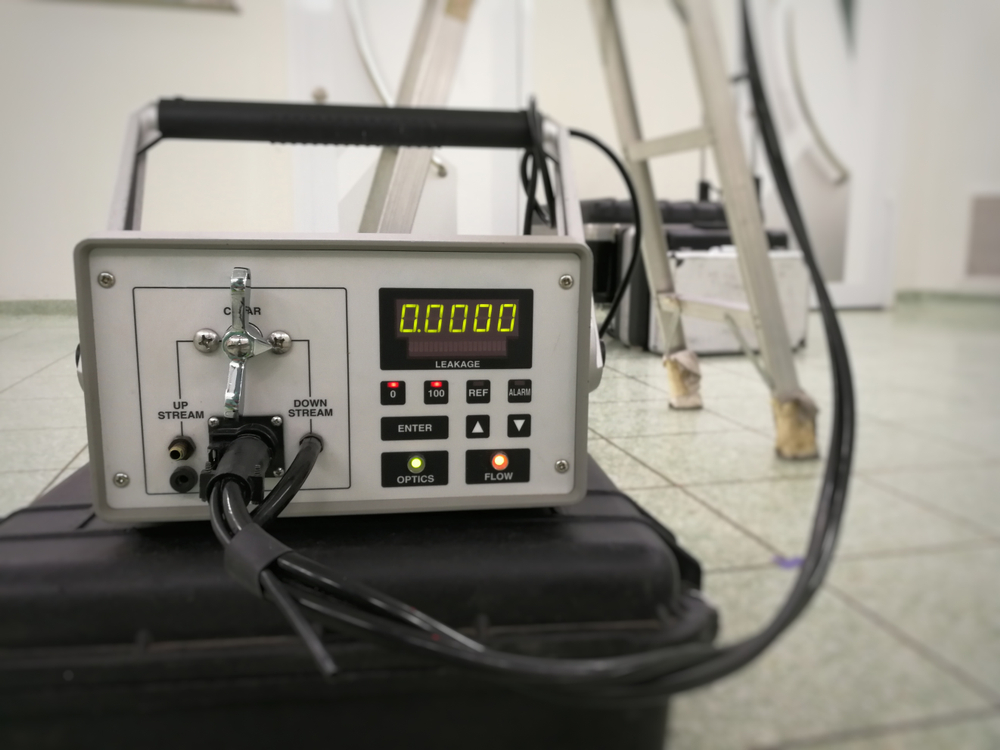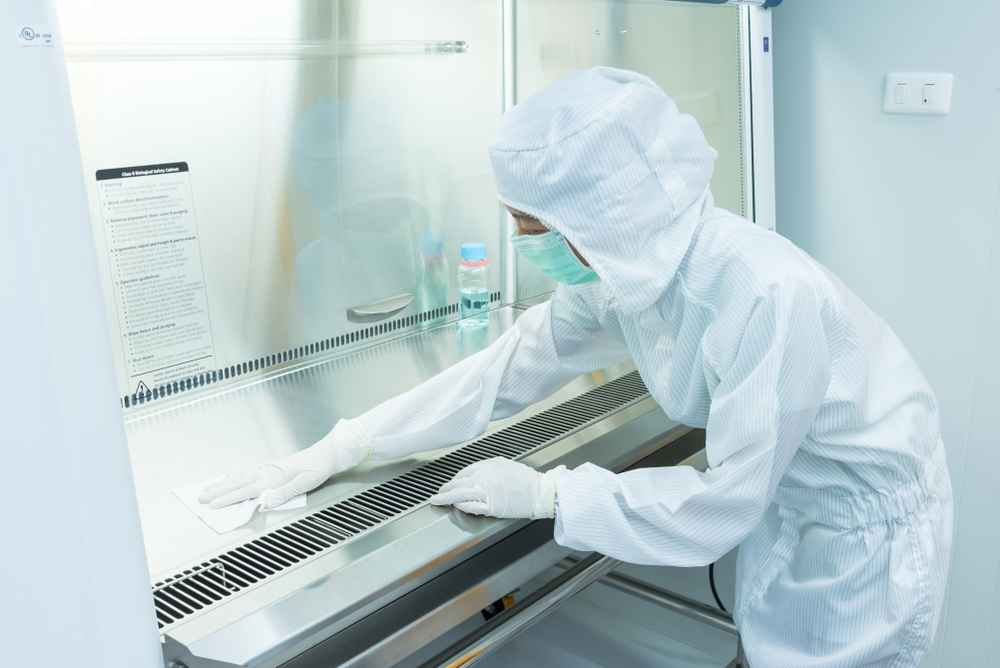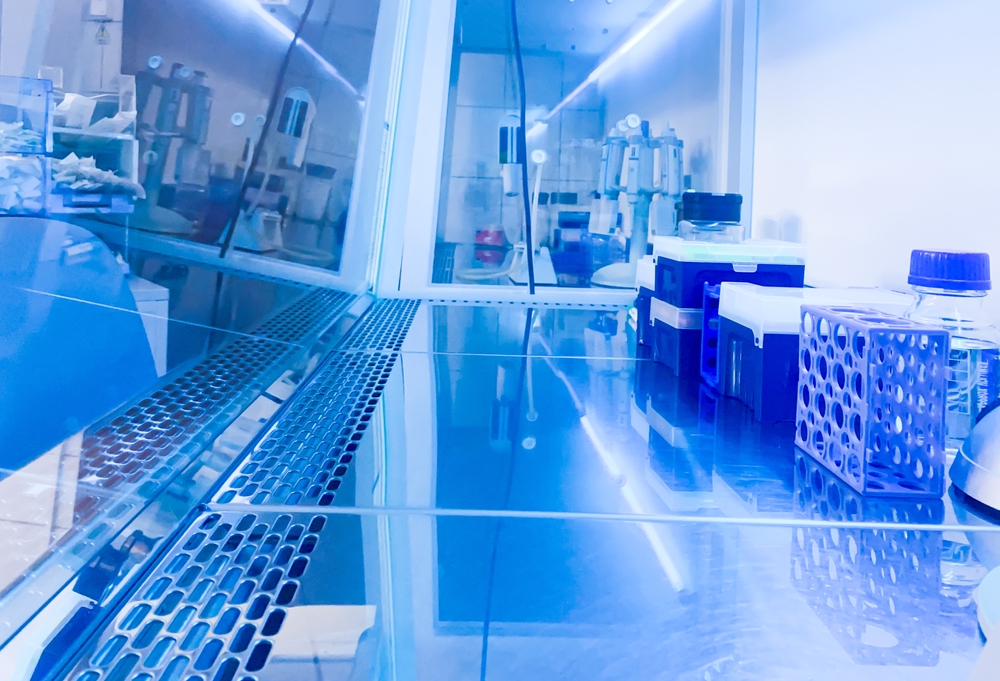In the realm of laboratory safety, biosafety cabinets (BSCs) play a crucial role in protecting both researchers and the surrounding environment from potentially harmful biological agents. However, the effectiveness of these cabinets relies heavily on regular testing and certification. That’s where SEPS Services of Long Island comes in. In this blog post, we delve into the fascinating world of biosafety cabinet testing. Here, we explore the intersection of science and safety. BSC testing ensures that laboratories across the Tri-State Area of NY remain secure environments for groundbreaking research.
The Guardian of Your Lab: Unveiling Biosafety Cabinets
Biosafety cabinets are the unsung heroes of laboratory safety. At SEPS, we recognize their pivotal role in preventing contamination and protecting researchers from exposure to hazardous materials. A biosafety cabinet is a specially designed containment device crucial for maintaining a safe and controlled environment within labs. Engineered to protect both researchers and experiments, these cabinets provide a physical barrier against potentially harmful agents.
The major systems and features of a biosafety cabinet include:
-
Airflow Systems:
BSCs have complex airflow systems that maintain a unidirectional airflow pattern. This typically involves a downward flow of sterile air, which helps prevent contaminants from escaping the cabinet and protects both the user and the environment.
-
HEPA Filters:
High-Efficiency Particulate Air (HEPA) filters are a critical component of biosafety cabinets. These filters capture and retain airborne particles, ensuring that the air circulating within the cabinet is free from contaminants.
-
Front Opening:
The front opening of a biosafety cabinet allows researchers to manipulate materials inside the cabinet while maintaining containment. This opening has a sash or viewing window that adjustable to control airflow and protect the user.
-
Exhaust System:
BSCs have exhaust systems that remove filtered air from the cabinet, preventing the accumulation of contaminants. Typically, the exhaust air goes through a dedicated ventilation system to ensure it does not re-enter the laboratory.
-
UV Light:
Ultraviolet (UV) lights are commonly integrated into biosafety cabinets to provide an additional layer of decontamination. UV light helps sterilize the interior surfaces when the cabinet is not in use.
-
Internal Work Area:
The internal work area of a biosafety cabinet is typically made of stainless steel for easy cleaning and decontamination. It includes a work surface where laboratory tasks can be performed safely.
-
Alarm Systems:
BSCs may be equipped with alarm systems to alert users to issues such as inadequate airflow, filter saturation, or malfunctions. These alarms ensure that users are promptly notified of any potential safety concerns.
-
Gas and Vacuum Connections:
Some biosafety cabinets have provisions for gas and vacuum connections, allowing researchers to conduct specific procedures within the controlled environment of the cabinet.
-
Standby Mode:
Many modern BSCs feature a standby mode that allows the cabinet to continue running at a reduced airflow when not in active use. This helps maintain a clean environment and reduces the warm-up time when the cabinet is brought back into operation.
-
Self-Closing Mechanism:
To ensure containment, biosafety cabinets often have a self-closing mechanism for the front sash. This feature helps prevent accidental exposure and maintains the integrity of the cabinet’s containment capabilities.

Photo Description: Particle counter for HEPA filter scan leak test
The Science Behind Biosafety Cabinet Testing: Beyond the Basics
Biosafety cabinets are designed to provide a safe working environment for researchers and protect the integrity of experiments. Importantly, regular testing ensures that these cabinets meet the required safety standards. SEPS Services employs a meticulous approach to biosafety cabinet testing, combining the art and science of equipment evaluation.
-
Airflow Verification:
- SEPS Services employs cutting-edge equipment to conduct meticulous airflow verification tests, ensuring biosafety cabinets maintain optimal containment and air cleanliness levels.
- Certified technicians meticulously measure and validate airflow patterns, contributing to the sustained efficacy of these vital safety devices.
-
HEPA Filter Integrity Testing:
- SEPS Services specializes in the critical area of HEPA filter integrity testing, an essential component of biosafety cabinet certification.
- Rigorous testing procedures are implemented to verify the efficiency of HEPA filters, ensuring contaminants are effectively captured, preventing any potential escape from the cabinet.
-
Vibration and Noise Analysis:
- Going beyond the standard, SEPS Services incorporates vibration and noise analysis into the evaluation process.
- By addressing factors such as excessive vibration or noise levels, SEPS ensures not only the safety of experiments but also a conducive and distraction-free laboratory environment.
Navigating Regulatory Compliance: A Roadmap for Laboratory Safety
Navigating regulatory compliance is an essential aspect of ensuring laboratory safety. Furthermore, it serves as a strategic roadmap for maintaining the highest standards in scientific research environments. As laboratories continually evolve and adopt cutting-edge technologies, adherence to regulatory guidelines becomes paramount.
It’s essential for laboratory managers, researchers, and safety officers to stay informed about the latest updates and revisions to these standards. Compliance with these regulations ensures that biosafety cabinets effectively contain and control biohazardous materials, protecting both laboratory personnel and the environment. Additionally, regular testing and certification by accredited organizations, such as SEPS Services, can help laboratories meet and exceed these regulatory requirements.
1. NSF/ANSI Standard 49:
The NSF/ANSI Standard 49 is a widely recognized standard developed by the National Sanitation Foundation (NSF) and the American National Standards Institute (ANSI). Furthermore, it provides specifications for the design, construction, and performance of Class II biological safety cabinets.
2. ISO 14644-1:
Part of the ISO 14644 series, ISO 14644-1 establishes the classification of air cleanliness in cleanrooms and controlled environments. Undoubtedly, this standard is essential for ensuring the cleanliness and sterility of biosafety cabinets.
3. CDC/NIH Biosafety in Microbiological and Biomedical Laboratories (BMBL):
The Centers for Disease Control and Prevention (CDC) and the National Institutes of Health (NIH) jointly publish the BMBL, which provides comprehensive guidelines for biosafety practices. This includes the use and maintenance of biosafety cabinets.
4. Occupational Safety and Health Administration (OSHA):
OSHA, a U.S. federal agency, sets and enforces standards for workplace safety. Laboratories must comply with OSHA regulations, which may include specific guidelines for the use of biosafety cabinets to protect workers from exposure to hazardous materials.
Understanding the Process of Biosafety Cabinet Certification
Biosafety cabinet certification is a comprehensive process designed to ensure that BSCs are operating according to specified standards and guidelines. The certification process involves a series of tests and evaluations conducted by qualified professionals, like SEPS Services of New York. Regular certification, typically performed annually, helps laboratories maintain a safe working environment, comply with regulations, and ensure the continued effectiveness of biosafety cabinets.
Here is an overview of the typical steps involved in biosafety cabinet certification:
1. Pre-Assessment:
Before the certification process begins, a pre-assessment may be conducted to identify any potential issues or areas that need attention. This may involve reviewing the cabinet’s maintenance history, usage logs, and any reported problems.
2. Documentation and Certification Report:
Following the tests and inspections, certified technicians generate detailed documentation and a certification report. This report includes information on the tests performed, their results, and any necessary recommendations or corrective actions.
3. Certification Labeling:
Upon successful completion of the certification process, a certification label is affixed to the biosafety cabinet. Typically, this label includes information such as the date of certification, the technician’s signature, and any relevant certification standards.
Real-world Challenges: Troubleshooting and Maintenance

Photo Description: A scientist in sterile coverall gown cleaning Biological safety cabinet (BSC) in laboratory
In the dynamic world of laboratory operations, lab personnel play a crucial role in identifying and addressing real-world challenges associated with biosafety cabinets (BSCs). For instance, regular monitoring is essential. Personnel should be vigilant in recognizing signs of potential issues such as fluctuations in airflow, unusual sounds, or compromised containment. Troubleshooting involves a systematic approach, including checking for visible damage, assessing filter integrity, and examining seals.
For general maintenance, routine cleaning and decontamination are imperative, ensuring that the BSC functions optimally. Additionally, lab personnel can contribute to BSC longevity by adhering to usage guidelines and promptly reporting any irregularities. Establishing a culture of proactive maintenance, with trained staff to conduct basic checks and report concerns, fosters a collaborative effort to sustain peak BSC performance, contributing to a safe and secure laboratory environment.
Conclusion:
In the dynamic world of biosafety cabinet testing, a blend of scientific rigor and real-world application ensures laboratories remain safe and conducive to groundbreaking research. By understanding the intricacies of testing methodologies, staying abreast of regulatory requirements, and embracing innovative technologies, laboratories across NY and the Tri-State Area can confidently navigate the path toward complete biosafety.
